

| Cruisers> > Shetland Cadet Weekender |
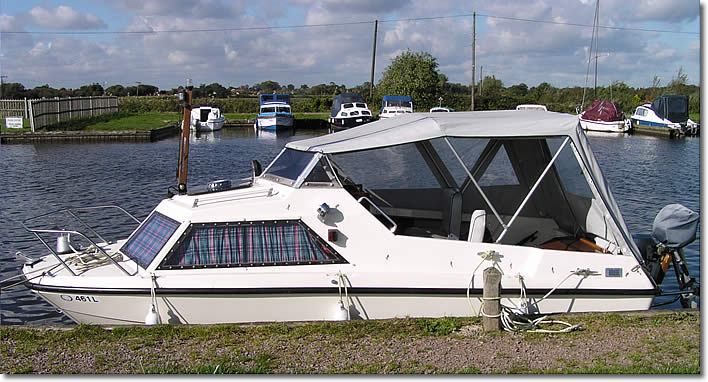 |
|
|
Purchased secondhand
in 2003, (built in 1989). These boats were
originally 'open plan' with no cabin bulkhead. (Although the latest
models have them now). Although only 15'3" long (17' now with the outboard guard), she has 4 seats and two berths. |
|
|
This is how she looked before the conversion. The hull originally had extensive vinyl decals. These were a bit scuffed in places, so I removed them with a hot air gun. (Very carefully, on low heat, to avoid damaging the gelcoat.) Also visible in this picture is the shiny white original gelcoat bottom, showing that she couldn't have spent much time in the water. |
 |
|
I now keep her moored in the water for most of the year, so I gave her the recommended 6 coats of International Gelshield, and then two coats of Compass hard antifouling. (This will hopefully stop any chance of nasty little osmosis blisters from forming...) |
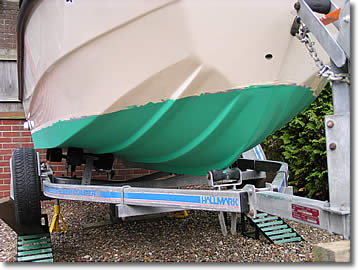 |
|
The final coat of antifouling (in mid blue). The stainless steel rear bumper/outboard guard was fabricated for me by MarineWeld of North Walsham (01692 404018). In order to get exactly the shape I wanted, (the motor can still be fully tilted upwards etc.), I made a template out of 22mm copper pipe, which they copied exactly. The 'shoulder pad' corner fenders protect the gelcoat from the numerous quay headings around the Broads. Just visible on the trailing edge of the transom is the triducer head for the Navman fishfinder. (It's great to have a boat with no holes in it...) |
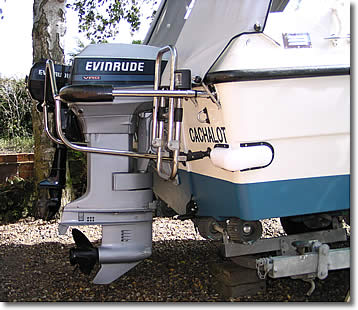 |
| Most of the electrics are centered around the rear of the dashboard, in a shallow cupboard in the cabin. Wired to Boat Safety scheme standards, there are numerous fuses and circuit breakers. | 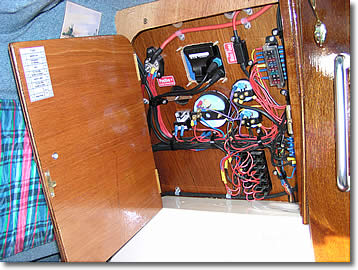 |
|
The dashboard contains:
|
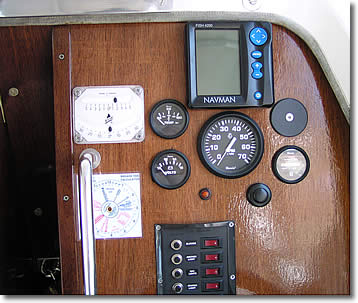 |
|
The cabin, although very small, contains the original moulded-in berths plus a chemical toilet. As an essential life-support item, there was just enough room to incorporate this under the starboard berth. A small, hinged shelf was fitted forward, and the whole cabin was lined with cord polyester lining carpet. (The conversion was carefully designed so that none of the existing interior mouldings were cut or removed, as they probably add considerably to the rigidity and structural integrity of the hull.)
|
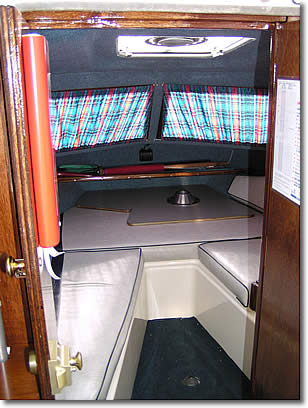 |
|
This view from the cabin to the cockpit shows the Perko master cut-off switch (the batteries are in a vented locker beneath the port bunk). The port side galley unit in the cockpit carries the co-pilot seat on a hinged, swiveling base. All of the wood was either far-east marineply (I'm not a millionaire), or solid mahogany. |
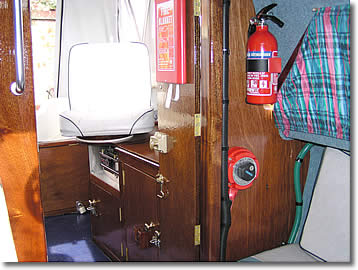 |
|
The general view of the cockpit showing the galley unit to port and the helmsman's seat on a swiveling pedestal to starboard. It needed to be about 800mm high to see comfortably over the cabin roof, so I added a non-slip footrest to the front of the original glassfibre helm pedestal. Having modified a number of boats previously, (and learning by experience ! ), I kept a close eye on the weight of these additions, especially the wood. Each piece was weighed prior to installation, and the total came to just over 100kg, the weight of one (heavyish) adult. This was distributed fairly evenly throughout the boat, and mostly low down. |
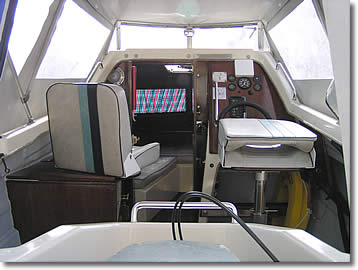 |
|
This view shows the new stub mast for the nav lights (to get the necessary 1 metre height separation). Also visible is the tannoy ventilator on the forehatch to give permanent ventilation to the now fully enclosed cabin. This picture was taken on the upper reaches of the River Thurne, near Martham Broad. |
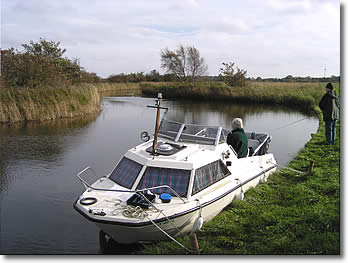 |
| After launching Cachalot on the Broads, the 40hp was found to be far too powerful, so I replaced it with a 9.9hp Honda 4 stroke. This is much quieter and smoother and gives around 15mpg at Broads speed limits. Also visible is the Seagull forty-plus backup engine. | 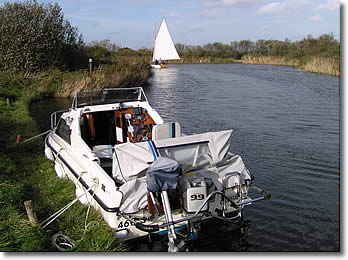 |
|
This final picture shows the excellent view from the cockpit when the canopy is down. The Cadet is a surprisingly compact boat, at only 15ft long, and yet I get the best of both worlds, an enclosed cruiser or an open cockpit dayboat that is easily trailed. The picture was taken in Deep Dyke, connecting Hickling Broad with the River Thurne. |
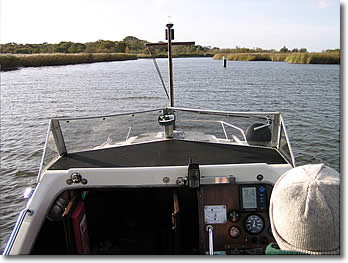 |